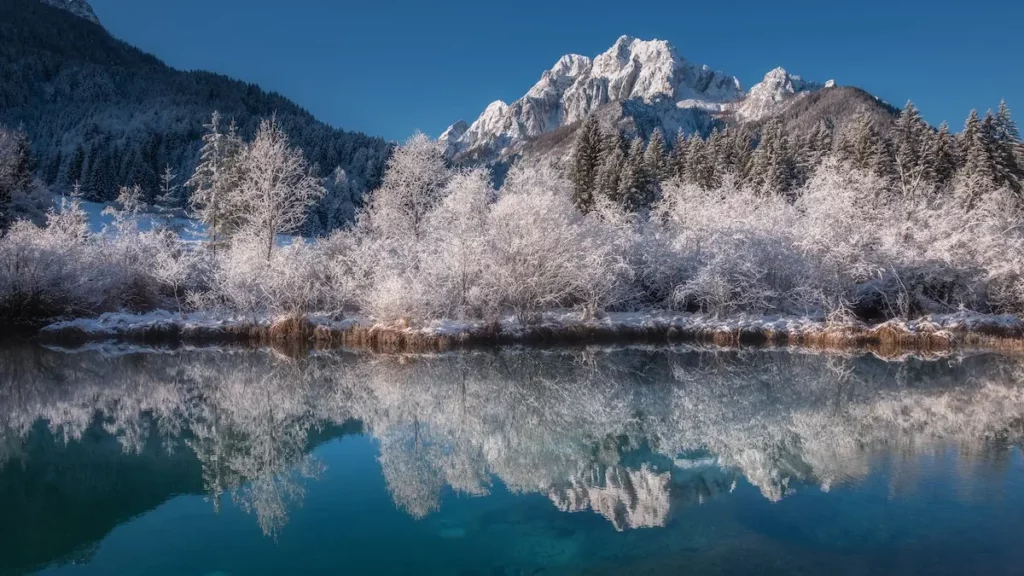Zion National Park is known for its wide range of weather. While the Park generally experiences mild temperatures, the climate can range from very hot to very cold depending on the season. During summer, temperatures average in the 80s and 90s and can climb as high as 106°F. In the winter, temperatures may dip down to the 20s and 30s. Precipitation is common, with the Park receiving an average of 15 inches of rain annually. Snow is also possible during winter, although it’s rarer than rainfall. The Park experiences an average of 20 days with thunderstorms each year, and visitors should always be prepared for strong winds, especially in the afternoon. Regardless of the season, visitors should be prepared for various temperatures and weather conditions.
Importance of Knowing Weather Conditions at Zion National Park
Understanding the weather conditions at Zion National Park is essential for making the most of your visit. Knowing the weather in advance helps you to decide what to bring for the day. The Park experiences hot summers, rising to over 100 degrees in July and August. Winters are cold and dry, with temperatures reaching lows of around 25 degrees. Rain is common from March to May, so visitors should always bring rain gear. The weather can also be unpredictable, with sudden changes in temperature and rain. Therefore, visitors should always be prepared for any weather. Familiarizing yourself with the Park’s weather conditions is a great way to plan a successful visit.
Year-Round Weather at Zion National Park
.Zion National Park is located in the arid desert of southern Utah, making it a prime destination for those who love rugged, dry landscapes. But what is the weather like throughout the year?
The Park enjoys over 300 days of sunshine a year, making it one of the sunniest places in North America. The temperatures can range from the mid-40s in the winter months to the mid-90s in the summer months. Most of the rainfall comes during the winter and early spring, with April and May being the wettest months.
In the summer months, temperatures can be high. But, there is usually less humidity than in other parts of the country, so the heat is often bearable. To make the most of the desert scenery, visit in the spring or fall when temperatures are mild and the landscape is vibrant and alive.
Summer Weather
Summer in National parks is a sight to behold. The days are sunny and hot, with temperatures rarely dropping 90 degrees Fahrenheit (32 degrees Celsius) below. The sunsets over the canyon walls provide a spectacular show that is unparalleled. The nights are cool and comfortable, making it perfect for camping and exploring. And, with the average humidity at only 45%, you won’t have to worry about feeling too muggy.
Though temperatures may be high in the summer, the dry air tends to keep the heat from being too oppressive. So, remember your sunscreen! Afternoon thunderstorms are common in July and August, so it’s best to check the weather report before hiking.
You’ll surely have an amazing time no matter what season you visit Zion.

Winter Weather
Winter weather in Zion National Park is usually mild. Temperatures rarely drop below freezing, and snow is rare. The average winter temperatures range from lows in the mid-30s to highs in the mid-50s. The Park may experience some rain and wind during the winter, but these events are usually short-lasting. Zion is a great place to explore during the winter due to the mild temperatures and lower crowds. The canyon walls provide the perfect setting for a winter getaway, with plenty of hiking, biking and rock climbing opportunities. As always, park visitors should be prepared for changes in the weather and any sudden storms that may come up.
Spring and Fall Weather
Zion National Park is a beautiful destination that offers stunning views and various activities year-round. The weather in the Park varies greatly between seasons, making it a great destination for all seasons.
Spring is a beautiful time to visit Zion National Park, with temperatures warming up and the landscape blooming with life. March and April typically see temperatures between the mid-50s and mid-70s, with occasional rain showers. It may bring warmer temperatures, with highs reaching the upper 70s and low 80s, and occasional rain.
Fall is another great time to explore Zion National Park, with temperatures generally ranging from the mid-50s to mid-70s. October and November are usually sunny and dry, with occasional precipitation. The fall foliage is also a breathtaking sight, with the canyon walls’ red, yellow and orange colours.
Weather Precautions to Take When Visiting Zion National Park
When visiting Zion National Park, it is important to be aware of the weather and take necessary precautions. Zion is in a desert climate, and the temperatures can range from mild to extreme. It is important to plan your visit accordingly and bring the right clothing and supplies. During the summer, being aware of the intense heat is especially important. It is recommended to bring plenty of sunscreens and stay hydrated. Warm weather clothing, such as loose-fitting, breathable clothing, should also be worn.
In the winter months, temperatures can drop significantly and snow can occur. It is important to wear warm layers and waterproof clothing. Make sure to bring a full winter kit to ensure safety in the event of an emergency.
No matter the time of year, it is important to know the weather conditions. Be prepared for anything, and make sure to dress appropriately. Take some time to check the forecast before visiting Zion National Park.
Proper Clothing
When packing for a trip to Zion National Park, proper clothing is one of the most important items to include. Planning ahead and knowing what type of conditions you will encounter can help keep you comfortable and safe during your adventure.
In the summer, temperatures can range from cool to hot and humid, so it is best to bring various clothing options. Lightweight, breathable fabrics such as cotton and linen are ideal for warmer days and can be layered for cooler evenings. Sun-protective hats, sunglasses, and sunscreen are also recommended.
In the winter, temperatures can drop below freezing, so it is important to pack accordingly. Layering is key during this time of year, so bring a coat, hat, gloves, and scarf. Waterproof and insulated jackets are also good for rainy or snowy weather. Remember to pack sturdy, waterproof hiking boots for your outdoor exploration.
Sun Protection
As temperatures rise and the days get longer, it’s important to remember that sun protection when visiting Zion National Park. Zion is known for its rugged and beautiful terrain; in the summer, the sun can be intense and unforgiving. Sunburns and dehydration can be dangerous, so it’s important to plan accordingly.
Before leaving for Zion, bring a hat, sunglasses, and sunscreen with at least an SPF 30 rating. Cover up as much exposed skin as possible and hydrate often. Cool, shady spots offer the best protection, and drinking plenty of water will help to keep you hydrated and protect you from the heavy Utah heat.
If your visit includes a hike, be sure to bring along a water bottle and snacks. The sun can be especially intense in the middle of the day, so plan your hikes for early morning, late afternoon, or evening.
Be Prepared for Unexpected Weather Changes
Zion National Park is known for its extreme weather changes. Visitors to the Park should be prepared for anything from the intense heat of the summer to the cold winter months. Even during the summer, temperatures can dip quickly during the evening, and unexpected rainstorms can appear without warning.
Before planning a trip to Zion, it’s important to check the weather forecast and be prepared for changes. When packing for your visit, including rain gear and warm clothing, such as a jacket and hat.
You should also be aware that the terrain in Zion can be difficult to navigate. Strong winds and rain can make trails slippery and dangerous. If you get caught in a storm or windy weather, the best action is to seek shelter and wait out the storm.
No matter what the weather, always remember to stay hydrated and be aware of your surroundings. With the unpredictable weather of Zion, being prepared can make all the difference in your visit.
Weather Resources for Zion National Park
Zion National Park weather can vary greatly depending on the season. Whether you’re visiting to hiking, camping or sightsee, it’s important to know what the weather will be like. For Zion National Park weather information, there are a few resources to help you plan your trip.
The National Park Service website has an up-to-date forecast. They also provide information on extreme weather conditions and hazards.
Weather.com also provides a forecast for Zion National Park, with hourly updates and warnings.
Zion National Park also has a weather station, KZNP, that provides current conditions, temperature and precipitation readings.
World Weather Online is another great resource for checking the forecast for Zion National Park. They provide a 5-day forecast with hourly updates.
With these resources, you should be able to find the most up-to-date and accurate weather information for Zion National Park.
Weather Forecast Services
Weather forecasts are essential when planning a trip to Zion National Park. Knowing what the weather will be like is key to ensuring you have an enjoyable time. Fortunately, many weather forecast services are available to help you stay informed on what to expect while visiting the Park.
Before venturing out, check the Park’s website for the most current weather conditions. There, you can find the day’s temperature, humidity, and wind speed. Additionally, the National Weather Service offers several layers of weather forecasting for the Park. They provide detailed forecasts, hour-by-hour conditions, and extended forecasts for the upcoming days.
For more detailed weather forecasts, several mobile apps are available. These apps provide a more comprehensive view of the weather, including real-time alerts and satellite images. With all the data at your fingertips, you can be sure to pack the right clothes and equipment for your travels in Zion National Park.
Weather Stations
Weather stations provide an invaluable service to Zion National Park. Located throughout the Park, these instruments measure and track important weather information such as wind speed, humidity, and temperature. This data is collected in real time and monitored 24/7 to ensure the safety of visitors to Zion. The data also informs park staff and visitors of any potential severe weather and imminent danger. Additionally, the weather stations provide important insight into climate change within the Park, helping park staff to better plan for and manage the area’s future conditions. Weather stations throughout Zion National Park are essential to protecting visitors and the future of its remarkable landscape.
Local Weather Advisories
When visiting Zion National Park, it’s important to watch local weather advisories to ensure a safe and enjoyable trip—the Park Service issues advisories for flash flooding, high winds, lightning, and extreme temperatures. Flash floods are dangerous in Zion due to the arid climate and steep-walled canyons. High winds can cause dangerous dust storms, and lightning strikes can pose a threat even in the dry season. When temperatures exceed 100°F, visitors should take precautions to stay cool and hydrated. Always be aware of the forecast and follow all warnings issued by the Park Service.
Conclusion
In conclusion, Zion National Park’s weather can vary depending on the time of year. While summers can be warm and sunny, winters can be cold and snowy. Visitors should plan accordingly and be prepared for all types of weather. The Park’s website is a great resource for current conditions and can help visitors make the most of their trip.
Read More Here: https://towardstravel.com/mountaineer-inn/






